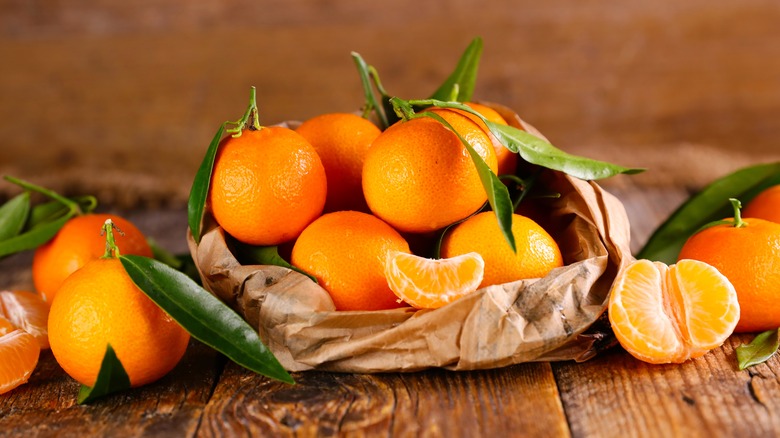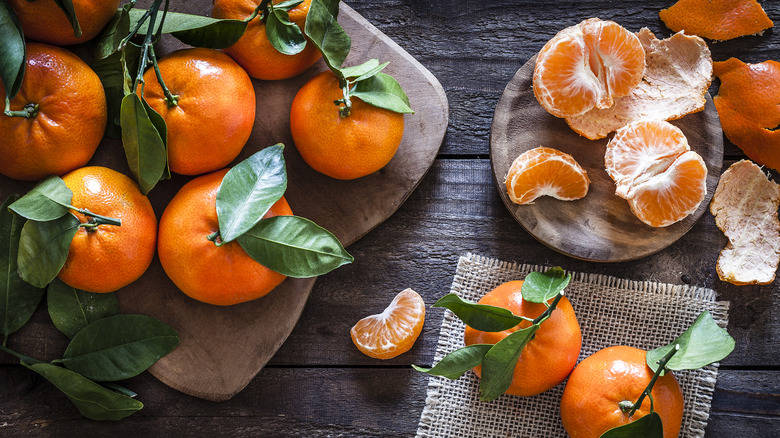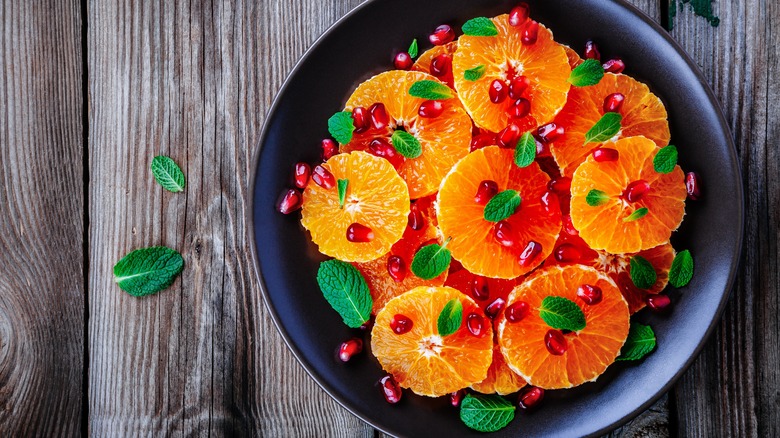The Difference Between Clementines And Mandarin Oranges
Placed side by side, it may seem hard to tell the difference between clementines and mandarins based on appearance alone. These petite, brightly colored oranges, both botanically classified within the broad "Citrus" genus, are very closely related. The distinction comes further down the taxonomic ranking at the species level: Technically speaking, all clementines are mandarins, though not all mandarins are clementines. But what does this mean when you're at the grocery store trying to choose one to snack on? There are a couple of key differences that can help you distinguish clementines from other mandarins based on how they look.
At a glance, clementines tend to have a glossy, smooth, thin peel that fits more snugly around the inner fruit than most mandarins, but remains very easy to remove. Other mandarin varieties, such as satsumas, tend to have a thicker, looser peel with less of a shine and an uneven texture.
The origins of the two oranges
To clarify what is unique about clementines and mandarins, as well as any confusion about the family relationship between the two, it can be helpful to understand a little about the history of these fruits. All citrus varieties can be traced back to three ancestors: citrons, pomelos, and mandarins. While all of these, plus their offspring, are cultivated in many places around the world today, they originated in South and East Asia. It is believed that mandarins were first grown in China approximately 8 million years ago. Clementines, by comparison, are extremely young, having been developed in Algeria as a hybrid by Clément Rodier in the 19th century.
When it comes to the experience of eating a clementine, there are two main factors that set them apart from other mandarins: seeds and sweetness. Pop a piece of "Citrus clementina" into your mouth, and you'll find that it is free from seeds, and highly sweet.
Making the most of citrus season
In the United States, the peak season to enjoy clementines, mandarins, and all kinds of citrus is from November to March. Coincidentally, this period is when we are most at risk of catching the flu. According to a 2020 study in "Frontiers in Immunology," regular consumption of foods rich in vitamin C supports a healthy immune system and fights against infections. Clementines contain an especially high amount of vitamin C, even compared to mandarins, making them an especially nutritious choice.
Both clementines and mandarins can be enjoyed on their own, but they are also wonderfully versatile ingredients. You can enjoy these bright fruits in a slightly savory, somewhat bitter citrus salad with radicchio and pomegranate for dinner just as easily as you can transform them into a cake or sorbet for dessert. Since clementines tend to be sweeter than other mandarins, they're ideal for baking. The fact that they are so easy to peel also makes clementines a great start to many no-waste citrus peel recipes, perfect for candying or using as garnish.



